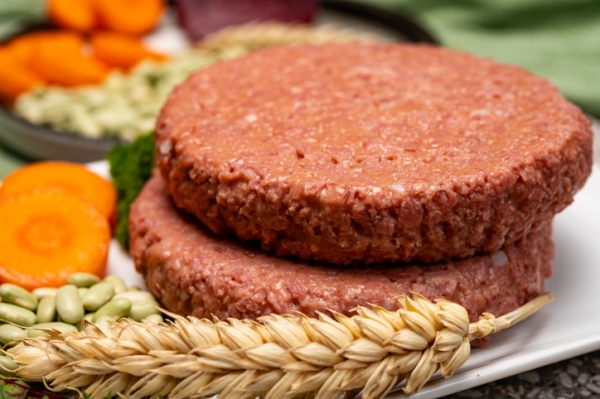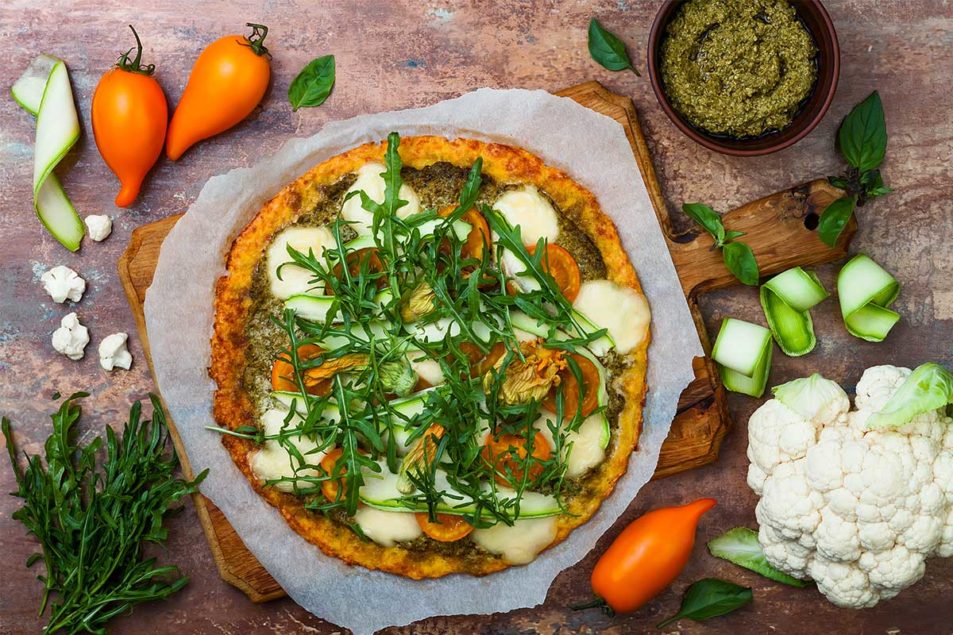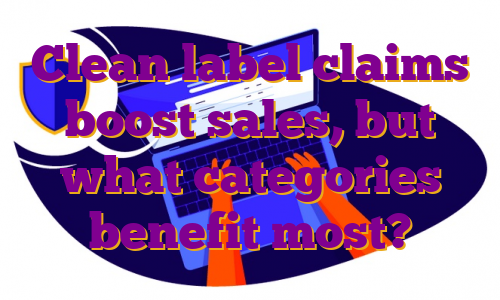While no longer at early pandemic levels, bread sales remain strong, thanks in part to increased consumer demand for specialty offerings. Center-store dollar sales of specialty bread rose 2% to $27.6 million, according to IRI for the 52 weeks ending April 17, 2022. Sales of panini, ciabatta and focaccia bread jumped 23.1% to $24.7 million. Shoppers are prioritizing indulgence when it comes to their baked foods, and inflation has driven many to opt for their favorite premium brands instead of eating out. At the same time, increasingly health-conscious buyers have driven sales of better-for-you (BFY) breads, including gluten-free offerings, and bakeries that specialize in these products are taking advantage. Canyon Bakehouse, Johnstown, Colo., for example, recently launched a gluten-free brioche dinner roll in addition to its line of whole grain, gluten-free products. And tortilla makers like Mission Foods, Irving, Texas, and Siete Family Foods, Austin, Texas, offer gluten-free tortillas made from almond, cauliflower, chickpea and cassava flour. It’s clear that products that marry consumer demand for premium and gluten-free baked goods can find success. But reformulating these offerings can be challenging for bakers, requiring them to do their homework on their desired product qualities and the best combination of gluten-free solutions to get the job done.Replacing the irreplaceable Baked foods rely on gluten to provide the expected texture, volume and more in consumers’ favorite baked foods. And that’s no different with specialty breads. “When it comes to gluten, I think we’ve got to be fair that you’re replacing an incredible ingredient,” said Steven Gumeny, regional product manager at Beneo. “Consumers expect certain textures from different types of bread, and really those classic textures are rooted in the tradition of working with wheat flour. The elasticity and structure provided by gluten, it’s naturally unique, and it’s very hard to replace in the bakery.”This elasticity allows bakers to easily form dough into what will become a premium roll, loaf or flatbread. Gluten also provides volume during baking, an essential function often lost when gluten is removed. “The most challenging thing for gluten-free bread is we often get the big holes inside a loaf,” explained Yanling Yin, PhD, director, bakery application, Corbion. “It’s because it doesn’t have gluten that provides visco-elasticity and can retain air bubbles without collapsing when the loaf is done expanding in the oven during baking.”Removing gluten can be especially difficult in premium products, Mr. Gumeny noted, because there’s more variance in the bubble formation and crumb structure, which significantly impacts texture. Understanding this expected texture is critical for bakers.“In a specialty product, the challenge is first to think about what that desired texture will be,” he said. “Is your tortilla going to be flexible or is it going to be crisp? Does your flatbread need crunch or chewiness, or both? And what’s your desired crust structure; are you going for a more rustic, bread-like crumb, or do you want the finer, cake-like features?”Once bakers decide on texture, they can then understand what may happen to it if gluten is removed. “For example, gluten-free flatbread is prone to tearing because of limited strength or elasticity, and it may have a powdery mouthfeel compared to traditional flatbreads,” explained Hanna Santoro, senior bakery scientist at ADM. “Freeze-thaw instability can affect textures of gluten-free pizza crusts or focaccia breads. Additionally, ancient grains might present a bitter aftertaste or aromatic off notes.”Replacing gluten is a difficult task in any premium product, but it may be easier in applications like tortillas that are less reliant on gluten for structure, noted McKenna Mills, senior technical services specialist for bakery, Cargill. “Formulating a gluten-free tortilla may be a little easier — you won’t need gluten’s strength to hold the product up. Still, you’ll face texture and mouthfeel challenges,” she said. “Gluten provides a chewiness and resiliency that is hard to replicate with other ingredients. Remove the gluten, and you’ll encounter negative attributes like gumminess, which can be difficult to eliminate.”Gluten also provides the moisture that is essential for achieving the proper texture of tortillas and flatbreads. “[Gluten-free] is a challenge in the flatter breads — the tortillas and flatbreads — because you don’t want these products to dry out, and if they do, they just become crackers,” Mr. Gumeny said. “So keeping that moisture without having all that great dough structure inside to trap the moisture, that becomes important.”Starch support In gluten-free formulations, starch is a go-to for bakers to hold onto that moisture, as well as maintain other key functionalities.“For structure, we typically rely on starches, which can serve as the backbone of the dough,” Ms. Mills said. Rice starches, for example, can mimic the structural and moisture-retaining capabilities of gluten in many applications. This includes waxy rice starch, which is made almost entirely of amylopectin, a compound that provides a unique branching structure that helps prevent gluten-free products from degrading.“This starch swells as soon as it’s mixed with the wet ingredients, which really improves your dough handling up front, and it’s also trapping in the moisture and keeping it where it belongs: in the bread during the baking process and also throughout the shelf life,” Mr. Gumeny explained. “That waxy instant starch is a great one for gluten-free products, pretty much all of them, and that same starch can be used to reduce breakage even in hard-baked goods like crackers and shortbreads as well.” Another key ingredient is starch or flour made from indica rice. This rice is high in the compound amylose, which aids in the crumb structure and formation of bubbles in the bread during baking. Bakers that use these waxy and indica rice solutions in conjunction can get the moisture retention and dough workability needed in baked foods. Beneo’s Remyline includes a finely ground, instant starch made from waxy rice. The company also offers a coarse, native indica rice starch and wet-milled micronized rice, both of which can be used together with instant waxy starch. The use of rice ingredients can also help specialty products achieve a clean label, which is increasingly popular with consumers. Cargill released its SimPure soluble rice flour earlier this year as a label-friendly alternative to maltodextrin, a processed ingredient derived from starch used to provide bulk, viscosity and taste to baked foods. “With our soluble rice flour solution, product developers finally have an alternative that behaves very similarly to maltodextrin in terms of functional attributes, and at the same time, it aligns with today’s consumer trend toward familiar ingredients,” Ms. Mills explained. Other starches and flour sources can serve as the backbone of specialty gluten-free formulations as well, including potato, tapioca, almond and cauliflower. Cargill’s SimPure potato and tapioca starches can fill the functional role of gluten while also satisfying consumers’ label expectations.Sorghum and oat flours are also commonly used due to their more neutral flavor profile compared to other alternative grains available, explained Vanessa Brovelli, research and development director at Bay State Milling. “In addition, their whole-grain nutritional contributions can boost fiber and protein, which is typically lacking in gluten-free baked goods made with mostly starches or white rice,” she added.Bay State Milling’s SowNaked Oats contain 40% more protein and half the carbon footprint of traditional oats, making them an ideal gluten-free option for specialty bakers looking to add additional nutritional and environmental benefits to their products.Regardless of the options bakers go for, Mr. Gumeny noted it’s important they nail down the right combination and quantity of each ingredient for their specific premium application, as well how the solution will interact with the other ingredients in the formulation.For example, cauliflower flour, a popular gluten-free substitute in pizza crusts and tortillas, often has a higher moisture content than conventional flour.“What that means is you either need to adjust how much moisture you add to your dough and be aware that these ingredients like starches, which are going to be trapping that moisture, are going to interact with that additional water activity as well,” Mr. Gumeny said. “So keeping in mind when adding a cauliflower, for example, that it’s not going to be a one-to-one with bread flour in terms of moisture.”Tortillas and flatbreads also typically have a much higher fat content than traditional breads, and this ingredient will affect how quickly starch absorbs moisture. “You need to be aware of that and possibly adjust your starch level up or down depending on the overall water activity of your product, based on the amount of shortening that you’re using,” he added.To eliminate some of the formulating complexity, Corbion offers gluten-free bread and tortilla bases. “Bases mean customers just add water and some yeast. Bakeries don’t have to batch in all those minor functional ingredients,” Dr. Yin explained. “The bases improve bakery production efficiency by reducing batching errors. It’s one of the popular solutions for bakeries.” Maintaining shelf life is another vital component when choosing the right ingredients. For example, gluten-free baked foods headed for the freezer aisle may benefit from more waxy starch that’s designed to resist retrogradation. “If you make sure there’s waxy rice in a frozen baked good, you’re actually going to get some good freeze-thaw stability on that, which means less ice crystals and ultimately a better product for longer,” Mr. Gumeny said. Makers of gluten-free flatbreads or pizza crusts also need to consider how the process affects gluten-free ingredients. “If you’re trying to sheet out thin pizza crust compared to rising a loaf of bread, some things are different,” he noted. “You’re still going to want good dough spring, you’re still going to want good structure, but you’ve got to be aware of again how your process interacts with the ingredients, namely in our case the starch, because anytime you have other ingredients that are competing for moisture, or you have a process that could potentially be damaging some starch, you could see differences.”Gums, emulsifiers and more While starches are a go-to for structure and moisture retention in gluten-free applications, bakers often include other ingredients to further replicate gluten’s functionality. This includes gums, which are often used as gelling agents to impart the proper texture of specialty breads. “Some starches can help with gel strength, but we’ll often turn to hydrocolloids like xanthan gum, guar gum and/or locust bean gum to deliver the full functionality needed,” Ms. Mills said. “These ingredients help provide proper batter viscosity, air entrapment, crumb elasticity and stability.”Setting agents can also assist with shelf life by extending crumb softening and preventing starch retrogradation, she added. Bean and pulse powders, including fava, pea, chickpea, navy beans and red lentils, can fill this role in gluten-free products while providing an additional source of protein, Ms. Santoro noted. Emulsifiers will often be added as well to help maintain softness. “Release agents like our soy, sunflower or canola lecithins are key for machinability,” Ms. Mills said. “Without any flour to hold onto the water, most gluten-free doughs are extremely sticky. Release agents improve the processability of gluten-free doughs.”Another common issue with gluten-free products is a dry texture, which can be solved with humectants that improve moisture retention over the product’s shelf life, as well as freeze-thaw stability, Ms. Santoro added.“Sweetening solutions are another solve,” she said. “Products like our reduced sugar glucose syrup aid in moisture retention while reducing total sugars in the formulation. Additionally, allulose syrup reduces sugars as well as total carbohydrates to help gluten-free bakery achieve lower carb claims.”Bakers can also extend the shelf life of gluten-free premium products through enzymes. Corbion offers its Ultrafresh line of enzymes for breads, buns, bagels, tortillas and flatbreads, as well as natural mold inhibitors. Growing consumer demand for BFY and premium offerings present an opportunity for bakers looking to make gluten-free specialty breads, but formulating these products remains a steep order. There’s no single drop-in option to replace the functionality of gluten, and bakers should work closely with suppliers to find the right ingredients for their desired product. .
Clean label claims boost sales, but what categories benefit most?
The clean label ingredient market is expected to grow to a value of US$42.5bn globally, according to forecasters at Market Research Future. That represents an impressive CAGR of over 17.5% through to the end of the decade.Product formulators are working on innovation and renovation that replaces artificial ingredients with those that are perceived as natural and minimally processed. Simplicity strikes a chord and shorter, understandable ingredient lists remain in vogue.This isn’t a new trend. The industry has been talking about the importance of cleaning up product labels for years. A recent study from Ingredion revealed that globally at least 50% of manufacturers report that their portfolios have already converted to clean label formulations. But manufacturers also said they have plans to increase clean label efforts in the next two-to-three years. So why do efforts to convert to clean label continue to gain steam?Consumers willing to pay more for clean labelsIngredion’s Global Clean Label Manufacturer research revealed that around 71% of consumers are willing to pay more for current brands that have been reformulated to make claims around the naturalness of their ingredients. Over 30% of consumers would be willing to pay a premium of more than 20%.While brands that convert to cleaner labels may be able to reap the rewards, those that do not risk being punished, with 82% of global consumers reporting a ‘high likelihood’ of switching from current brands not offering these claims to new brands that have these benefits. What’s more, 70% of them would not only switch but pay more to do so.This statement of intent is also borne out in what manufacturers are reporting on the ground, with 58% of food and beverage brands suggesting they have benefited from an increase in overall revenue thanks to conversion to clean label formulations.“Consumers are willing pay for additional benefits in current brands and new brands. Current brands are at risk of attrition and missed revenue opportunities if manufacturers do not convert their offerings and remain static,” Ingredion’s Daniel Haley, global Clean & Simple platform lead, told FoodNavigator. “These results make it easier to understand why over 50% over respondents said offering clean label foods or beverages is a priority within their company’s overall business strategy.” What motivates consumers to pay more for clean labels? Caution and health / Pic: GettyImages-Iam AnupongClean label resonates in categories with health halo and risk perceptionMarket Research Future analysts point out that the COVID-19 pandemic has had a ‘massive impact’ on the worldwide market for clean label ingredients. The researchers suggest clean label conversion is underpinned by two consumer drivers: caution about any negative health impact of food ingredients and demand for healthy options.“The buying habits of the consumers have changed notably, with them being more cautious about the food products that they purchase. Healthy eating habits have become quite prevalent among consumers…. Consumers are increasingly focusing on clean labels for out-of-home and at-home purchases; therefore, enhancing the application scope of clean label ingredients in a variety of food products,” they wrote in a research report.Perceived benefits around wellness are the primary driver for clean label demand, Ingredion’s Haley believes. “Whilst today’s consumers may also be looking for new, targeted health benefits or products supporting particular elements of sustainability, their foundational expectation is that products are made with ingredients they recognise, accept and strongly associate with naturality and minimal processing. Clean label is their first priority,” he stressed.So, what categories can benefit most from clean label renovation?When it comes to willingness to pay more and switch to brands with clean label credentials, Ingredion found all categories benefit – but some more so than others. Segments that are already associated with a health-halo and products aimed at children stand to gain most from clean label claims, while fixtures viewed as less healthy or more indulgent resonated less, Ingredion found.“The categories where the largest percentage of consumers will pay 20-30% more for products include baby food, meat and meat alternatives, plant-based yogurts, and plant-based milks. A lower percentage of consumers would pay such a premium in carbonated soft drinks and energy drinks. We tend to see lower desire in categories that are considered more of an indulgence or not usually considered a vehicle for health,” Haley detailed.
What motivates consumers to pay more for clean labels? Caution and health / Pic: GettyImages-Iam AnupongClean label resonates in categories with health halo and risk perceptionMarket Research Future analysts point out that the COVID-19 pandemic has had a ‘massive impact’ on the worldwide market for clean label ingredients. The researchers suggest clean label conversion is underpinned by two consumer drivers: caution about any negative health impact of food ingredients and demand for healthy options.“The buying habits of the consumers have changed notably, with them being more cautious about the food products that they purchase. Healthy eating habits have become quite prevalent among consumers…. Consumers are increasingly focusing on clean labels for out-of-home and at-home purchases; therefore, enhancing the application scope of clean label ingredients in a variety of food products,” they wrote in a research report.Perceived benefits around wellness are the primary driver for clean label demand, Ingredion’s Haley believes. “Whilst today’s consumers may also be looking for new, targeted health benefits or products supporting particular elements of sustainability, their foundational expectation is that products are made with ingredients they recognise, accept and strongly associate with naturality and minimal processing. Clean label is their first priority,” he stressed.So, what categories can benefit most from clean label renovation?When it comes to willingness to pay more and switch to brands with clean label credentials, Ingredion found all categories benefit – but some more so than others. Segments that are already associated with a health-halo and products aimed at children stand to gain most from clean label claims, while fixtures viewed as less healthy or more indulgent resonated less, Ingredion found.“The categories where the largest percentage of consumers will pay 20-30% more for products include baby food, meat and meat alternatives, plant-based yogurts, and plant-based milks. A lower percentage of consumers would pay such a premium in carbonated soft drinks and energy drinks. We tend to see lower desire in categories that are considered more of an indulgence or not usually considered a vehicle for health,” Haley detailed. What categories will consumers pay for clean labels in? / Pic: GettyImages-Tom WernerThe baby food category stands as an example of clean label expectations being enhanced by consumer caution. High demand for clean labels in baby food stems from parents’ desire to ensure their babies get the best nutritional start and, significantly, to protect them from ingredients that could be considered harmful.The Clean Label Project, a US advocacy group, is pushing for greater scrutiny of what goes into baby food and recently launched a certification scheme in response to the presence of contaminants like heavy metals that have been detected in the segment.“The First 1,000 Day standard shifts the narrative when it comes to ‘baby food’ safety. The standard is applicable to not just traditional baby foods but all foods and ingredients marketed towards pregnant women, infants, children, and lactating mothers,” explained Dr. Stephanie Canale, family medicine physician and member of the Clean Label Project Technical Advisory Committee.“There is an inextricable link between the health of the mother and her child. Infants and children have unique nutritional needs and unique vulnerabilities. Parents, brands, and governments alike should take every possible precaution to assure the health and safety of this most vulnerable population. The best way to decrease exposure to any given contaminant is to strive for variety in the foods given to babies and toddlers.”Plant-based products, meanwhile, are often perceived as healthier alternatives. But formulators in the space face a particular challenge around mimicking the organoleptic properties of animal-based products while meeting clean label expectations.
What categories will consumers pay for clean labels in? / Pic: GettyImages-Tom WernerThe baby food category stands as an example of clean label expectations being enhanced by consumer caution. High demand for clean labels in baby food stems from parents’ desire to ensure their babies get the best nutritional start and, significantly, to protect them from ingredients that could be considered harmful.The Clean Label Project, a US advocacy group, is pushing for greater scrutiny of what goes into baby food and recently launched a certification scheme in response to the presence of contaminants like heavy metals that have been detected in the segment.“The First 1,000 Day standard shifts the narrative when it comes to ‘baby food’ safety. The standard is applicable to not just traditional baby foods but all foods and ingredients marketed towards pregnant women, infants, children, and lactating mothers,” explained Dr. Stephanie Canale, family medicine physician and member of the Clean Label Project Technical Advisory Committee.“There is an inextricable link between the health of the mother and her child. Infants and children have unique nutritional needs and unique vulnerabilities. Parents, brands, and governments alike should take every possible precaution to assure the health and safety of this most vulnerable population. The best way to decrease exposure to any given contaminant is to strive for variety in the foods given to babies and toddlers.”Plant-based products, meanwhile, are often perceived as healthier alternatives. But formulators in the space face a particular challenge around mimicking the organoleptic properties of animal-based products while meeting clean label expectations. It can be difficult to produce a meaty mouthfeel while keeping labels clean / Pic: GettyImages-BarmaliniAccording to European organic ingredient supplier AGRANA Group this difficulty is clearly evident in vegan meat substitutes, where formulations that are free of additives – particularly artificial emulsifiers such as methyl cellulose – can be difficult to deliver while producing a meat-like juicy mouthfeel.At the AGRANA Research and Innovation Centre in Austria, the company is exploring potential solutions, creating vegan burger patties using ingredients like pre-gelatinized maize starch, potato fibres and vital wheat gluten, which – it claimed – ‘completely replace’ the need for methyl cellulose. “As a processor of plant-based, agricultural raw materials, we aim to show our customers how we can address the demand for vegan and vegetarian nutrition with new sustainable concepts,” reflected CEO Markus Mühleisen.Clean label and sugar reductionIf product categories that are already perceived as healthy benefit from clean label innovation, what about product attributes linked to health?Reduced or low sugar claims probably stand at the forefront of this, with research showing sugar content is a key influencer for the majority of grocery shoppers. However, sugar reduction has a nuanced relationship to clean label demand – sugar is, after all, a natural ingredient.A recent study sponsored by Cargill suggests that while consumers frequently check the amount of sugar a product contains before they purchase, they are less likely to scrutinise the specific sweetener used. Does this mean reduced-sugar products are exempt from the need to deliver clean labels? Not exactly, Cargill stressed.
It can be difficult to produce a meaty mouthfeel while keeping labels clean / Pic: GettyImages-BarmaliniAccording to European organic ingredient supplier AGRANA Group this difficulty is clearly evident in vegan meat substitutes, where formulations that are free of additives – particularly artificial emulsifiers such as methyl cellulose – can be difficult to deliver while producing a meat-like juicy mouthfeel.At the AGRANA Research and Innovation Centre in Austria, the company is exploring potential solutions, creating vegan burger patties using ingredients like pre-gelatinized maize starch, potato fibres and vital wheat gluten, which – it claimed – ‘completely replace’ the need for methyl cellulose. “As a processor of plant-based, agricultural raw materials, we aim to show our customers how we can address the demand for vegan and vegetarian nutrition with new sustainable concepts,” reflected CEO Markus Mühleisen.Clean label and sugar reductionIf product categories that are already perceived as healthy benefit from clean label innovation, what about product attributes linked to health?Reduced or low sugar claims probably stand at the forefront of this, with research showing sugar content is a key influencer for the majority of grocery shoppers. However, sugar reduction has a nuanced relationship to clean label demand – sugar is, after all, a natural ingredient.A recent study sponsored by Cargill suggests that while consumers frequently check the amount of sugar a product contains before they purchase, they are less likely to scrutinise the specific sweetener used. Does this mean reduced-sugar products are exempt from the need to deliver clean labels? Not exactly, Cargill stressed. Do shoppers want clean-label reformulation to cut sugar? / Pic: GettyImages-VladamirFLloydThe company’s 2021 survey of US shoppers also found evidence that sweetener claims influence purchases, too. Those that fared best in the Cargill study typically implied ‘natural’ or ‘no artificial’, including ‘naturally sweetened’ or ‘made with a natural sweetener’.Carla Saunders, senior marketing manager for Cargill’s high intensity sweetener lines, believes that clean label claims in reduced sugar products became more important for consumers in the wake of the pandemic.“The popularity of these types of claims – especially sugar-reduction – have been amplified by COVID-19, building on the ‘clean eating’ trends we’ve been tracking for several years,” she explained.“Products with these on-pack labels are often perceived as less processed and more healthful. That aligns with the demands of today’s more health-conscious consumers, who are seeking to manage their health and wellness goals through food and beverage choices.” .
Do shoppers want clean-label reformulation to cut sugar? / Pic: GettyImages-VladamirFLloydThe company’s 2021 survey of US shoppers also found evidence that sweetener claims influence purchases, too. Those that fared best in the Cargill study typically implied ‘natural’ or ‘no artificial’, including ‘naturally sweetened’ or ‘made with a natural sweetener’.Carla Saunders, senior marketing manager for Cargill’s high intensity sweetener lines, believes that clean label claims in reduced sugar products became more important for consumers in the wake of the pandemic.“The popularity of these types of claims – especially sugar-reduction – have been amplified by COVID-19, building on the ‘clean eating’ trends we’ve been tracking for several years,” she explained.“Products with these on-pack labels are often perceived as less processed and more healthful. That aligns with the demands of today’s more health-conscious consumers, who are seeking to manage their health and wellness goals through food and beverage choices.” .




